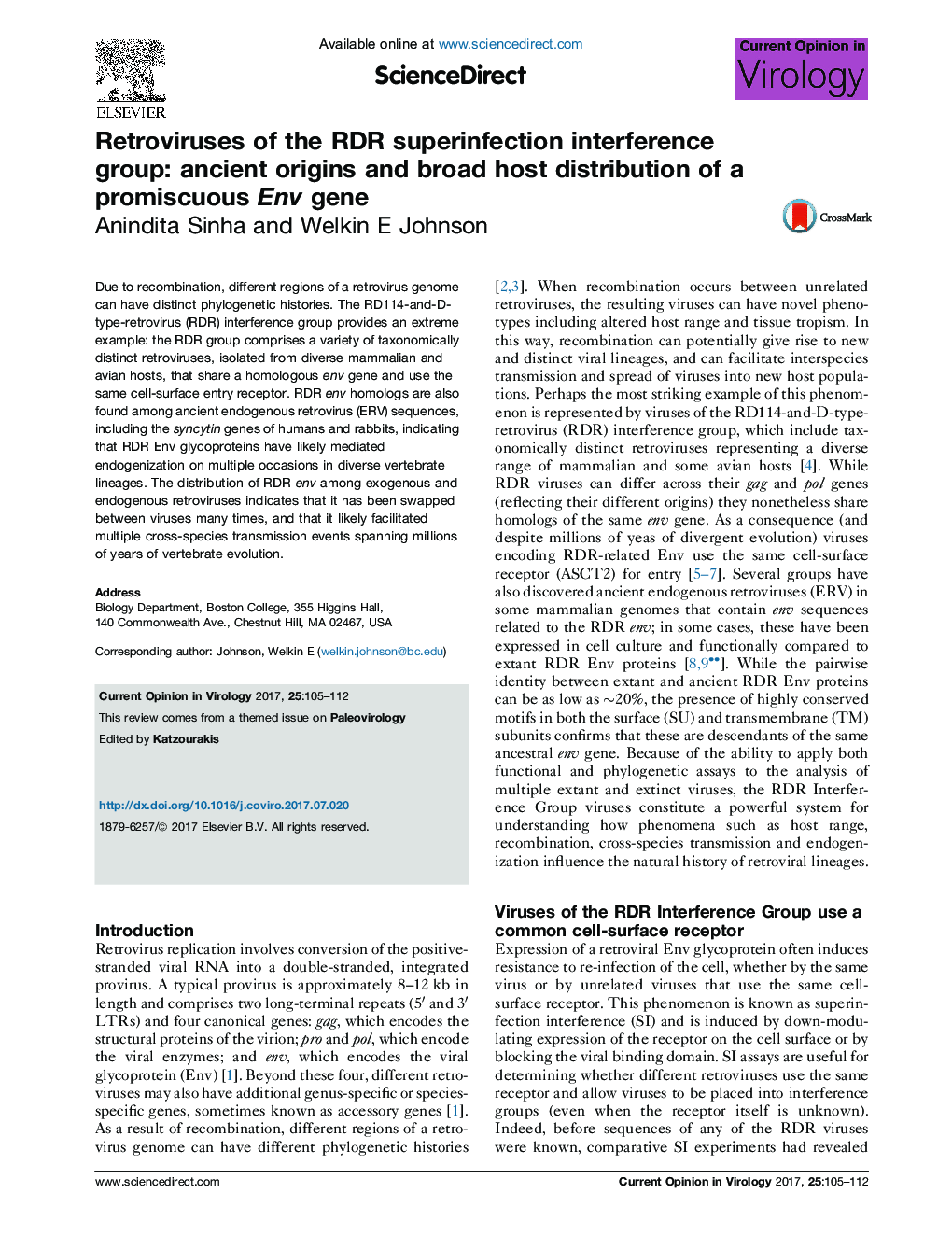| Article ID | Journal | Published Year | Pages | File Type |
|---|---|---|---|---|
| 5546201 | Current Opinion in Virology | 2017 | 8 Pages |
Abstract
Due to recombination, different regions of a retrovirus genome can have distinct phylogenetic histories. The RD114-and-D-type-retrovirus (RDR) interference group provides an extreme example: the RDR group comprises a variety of taxonomically distinct retroviruses, isolated from diverse mammalian and avian hosts, that share a homologous env gene and use the same cell-surface entry receptor. RDR env homologs are also found among ancient endogenous retrovirus (ERV) sequences, including the syncytin genes of humans and rabbits, indicating that RDR Env glycoproteins have likely mediated endogenization on multiple occasions in diverse vertebrate lineages. The distribution of RDR env among exogenous and endogenous retroviruses indicates that it has been swapped between viruses many times, and that it likely facilitated multiple cross-species transmission events spanning millions of years of vertebrate evolution.
Related Topics
Life Sciences
Immunology and Microbiology
Virology
Authors
Anindita Sinha, Welkin E Johnson,
